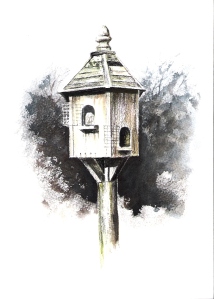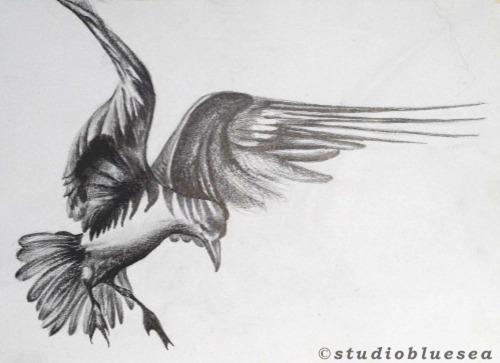 The sun was dipping into the great Atlantic Ocean that stretched away to the west. Our sturdy vessel romped along at 7 knots under reduced canvas. The seas were painted orange and deepest indigo, the wind was steady out of the northeast. Off to our east was the unseen coast of Portugal, indicated only by a ridge of cloud above the haze of evening. We were sailing offshore on a converging course with the shallowing water along the coast south of us, aiming for the passage between the mainland and Berlenga Grande Island. At our speed and with the current helping us along, our passage planning had us there for first light and we would transit the channel long before the start of the busy ferry traffic to the popular tourist island.
The sun was dipping into the great Atlantic Ocean that stretched away to the west. Our sturdy vessel romped along at 7 knots under reduced canvas. The seas were painted orange and deepest indigo, the wind was steady out of the northeast. Off to our east was the unseen coast of Portugal, indicated only by a ridge of cloud above the haze of evening. We were sailing offshore on a converging course with the shallowing water along the coast south of us, aiming for the passage between the mainland and Berlenga Grande Island. At our speed and with the current helping us along, our passage planning had us there for first light and we would transit the channel long before the start of the busy ferry traffic to the popular tourist island.
The boat was squared away for the night and we were relaxed in the cockpit watching the changing colours of the sunset as we enjoyed our evening meal. We were chatting companionably, when, above the sound of the sea and our passage through the waves, we heard a splashing commotion. We turned to see a small flock of seagulls attacking something in the water. Seagulls are generally quite garrulous and it struck us how silent these birds were as they assaulted their target, viciously tearing it to pieces. We could see feathers floating on the water and we got the binoculars for a closer look.
All at once a dark shadow flapped about above our boat and after a couple of attempts it managed to land on the cockpit bimini. It was a pigeon, hardly able to stand with exhaustion and the difficulty of the slanting surface. As we blinked at this uninvited guest another joined it and then a third bird fluttered down alongside. In the fading evening we saw more pigeons off our port quarter. Their flight was butterfly-like, a sort of lifting and falling and we realised that they were trying to land on the water yet too afraid of the running seas. Meanwhile the seagulls hovered nearby, taking off from the water to harass the dipping pigeons and dash them into the sea. The exhausted birds were being swept along by the wind and the few who had any strength circled around to land on the oasis of our boat. The majority was pushed past us to a watery end, food for the gulls or the fish.
Our visitors showed no fear as we offered them an assortment of crumbs and seeds but it was water that they needed, thrusting head and neck into the glasses we held for them, stretching their gullets to let the water run down into their dehydrated bodies, dunking their bills again and again. Each bird had a leg ring and we jotted down some of the numbers, thinking that we might find out where they had come from, where they were going. Racing pigeons, obviously, blown off course by the strong offshore wind. We left the food out for them, regretting it later as they deposited the digested remains everywhere.
Our watches through the night had us checking frequently on the welfare of our guests. There were about 15 pigeons, perched on the dinghy and the booms, standing about on the cockpit coaming and bimini, some fast asleep in the armpit of their wings, others restless and watchful, dark eyes glittering in our torchlight.
As we approached the early hours and the coast we started to see the faint glimmer of land lights and our attention was focused on navigation and the approach of the Berlenga passage. Not to the extent that we missed the first soft ‘crrr’, soon taken up by more of the pigeons who preened and stretched their wings. As the darkness lifted so too did one bird. He rose off the boom and started circling the boat and in a rush the others did too. They joined him in his circling and then they left, the small flock heading to the land close by. We watched them until we could no longer make them out in the dawn. Then we turned to the task of navigating the channel. Cleaning up the mess could come later.
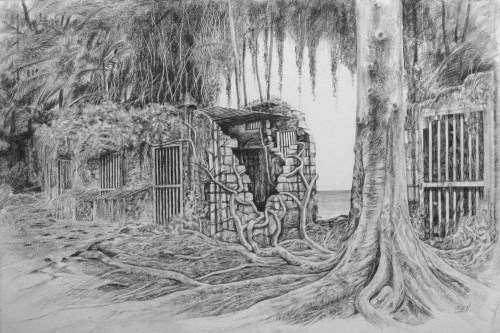

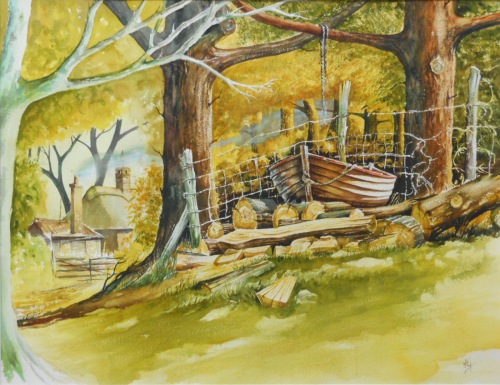
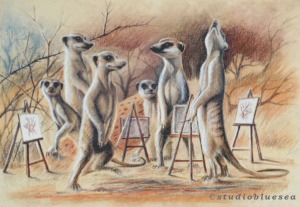 We are privileged to meet really lovely people through our art classes and many of them have become our friends. When we were in Spain we spent a couple of winters in the Mar Menor and gave art classes in La Manga. The hours ashore with those enthusiastic students led to the creation of a pastel drawing called ‘The Art Class’, a fun piece to remind ourselves of our time in Spain.
We are privileged to meet really lovely people through our art classes and many of them have become our friends. When we were in Spain we spent a couple of winters in the Mar Menor and gave art classes in La Manga. The hours ashore with those enthusiastic students led to the creation of a pastel drawing called ‘The Art Class’, a fun piece to remind ourselves of our time in Spain. The sun was dipping into the great Atlantic Ocean that stretched away to the west. Our sturdy vessel romped along at 7 knots under reduced canvas. The seas were painted orange and deepest indigo, the wind was steady out of the northeast. Off to our east was the unseen coast of Portugal, indicated only by a ridge of cloud above the haze of evening. We were sailing offshore on a converging course with the shallowing water along the coast south of us, aiming for the passage between the mainland and Berlenga Grande Island. At our speed and with the current helping us along, our passage planning had us there for first light and we would transit the channel long before the start of the busy ferry traffic to the popular tourist island.
The sun was dipping into the great Atlantic Ocean that stretched away to the west. Our sturdy vessel romped along at 7 knots under reduced canvas. The seas were painted orange and deepest indigo, the wind was steady out of the northeast. Off to our east was the unseen coast of Portugal, indicated only by a ridge of cloud above the haze of evening. We were sailing offshore on a converging course with the shallowing water along the coast south of us, aiming for the passage between the mainland and Berlenga Grande Island. At our speed and with the current helping us along, our passage planning had us there for first light and we would transit the channel long before the start of the busy ferry traffic to the popular tourist island.